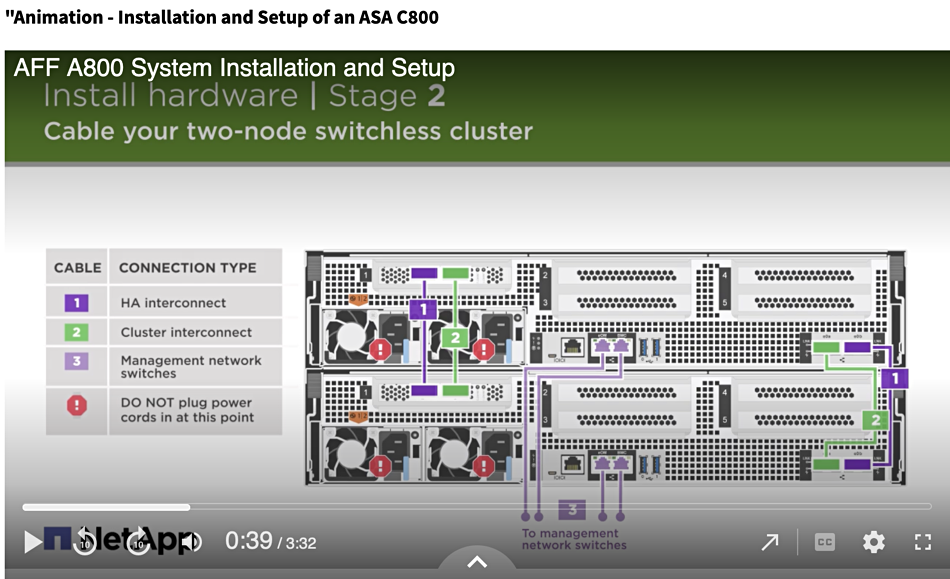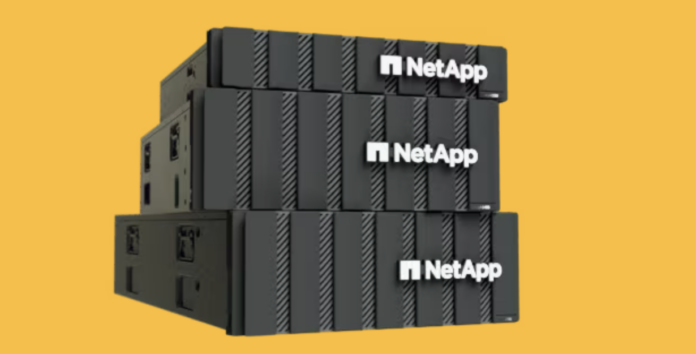NetApp is attempting to win over customers with a pitch to reduce costs in all-flash arrays and cloud services as it strives for growth in an AI-infused market.
The headline item at the NetApp Insight customer shindig in Las Vegas was a C-series implementation of its ASA all-flash SAN array using QLC flash drives like the AFF C-Series announced eight months ago. QLC SSDs, with 4 bits per cell, cost less than the standard TLC (3 bits per cell) flash drives used in the mainstream AFF and ASA array products, providing a more affordable all-flash array at near-disk prices. NetApp is also increasing GenAI support with Google and improving Amazon Sagemaker integration.
Harv Bhela, chief product officer at NetApp, said: “As we unveil updates to our enterprise-grade storage portfolio, we’re setting the stage for a transformative era in data management … There are two major disruptions today for customers: the opportunity of AI and the threat of ransomware.” NetApp made announcements in these areas as well.
ASA C-Series
The C-Series AFF array has turned out to be the fastest ramping product introduction in NetApp’s history, showing customers have an appetite for lower-cost all-flash arrays. As there are more than 20,000 customers running block workloads on ONTAP systems, NetApp is now giving them access to C-Series affordability as well.

We understand this is a straight repeat of the AFF C-Series introduction with three similar hardware products:
- ASA C800 – 4RU x 48 slot controller chassis
- ASA C400 – 4RU x 48 slot
- ASA C250 – 2RU x 24 slot
In effect, these are QLC implementations of the TLC ASA A800, ASA A400, and ASA 250 arrays. They support an NS224 expansion shelf with a 2RU x 24-slot chassis.

The ASA C-Series has a Six Nines (99.9999 percent) data availability guarantee, and is eligible for the NetApp Ransomware Recovery Guarantee. They are supported by ONTAP v9.7 or later.
NetApp has a set of no-cost services to encourage customers to move to the ASA products: upfront solution design assessment that includes the evaluation of any existing architecture, free data migration, software license and services, or three months of complimentary storage support during the migration period, and free training workshops.
We’re told ASA C-Series has a cost of $0.50/GB. It is not yet clear if these are raw gigabytes or effective capacity gigabytes.
Comment
NetApp does not provide raw drive capacities nor does it say how many rack units are needed for the maximum configurations. That means we cannot work out a TB per RU number or compare its rack space footprint with Pure Storage FlashArray//C systems, which also use QLC flash drives. These are Pure’s own design with up to 75 TB capacity. The highest-capacity commercially available datacenter QLC flash drive is Solidigm’s DC P5336 with up to 61.44 TB capacity.
If NetApp is using 61 TB SSDs in the ASA C-Series then it is at a TB/RU disadvantage relative to Pure unless it has better data reduction ratios. The FlashArray//C was introduced in 2019.
More public cloud and anti-malware stuff
NetApp is announcing three cost-cutting arrangements for its first-party public cloud services:
- Amazon FSx for NetApp ONTAP will lower overall TCO by taking advantage of VPC Peering to connect to VMware Cloud on AWS.
- Azure NetApp Files has enhanced capacity scaling, enhanced performance for Oracle databases and support for transparent automated tiering of data to the Azure Cool Blob tier for improved cost savings.
- Google Cloud NetApp Volumes, introduced in August 2023, has a new Standard service layer, with an over 30 percent reduction in cost/GB.
NetApp and Google are announcing support for Google Cloud’s Vertex AI with Google Cloud NetApp Volumes to support hybrid Generative AI applications. Ronen Schwartz, SVP and GM, Cloud Storage at NetApp, said: “This offering allows NetApp data on-premises to connect directly to Google’s Vertex AI on Google Cloud NetApp Volumes, with no additional engineering.”
Vertex AI provides MLOps tools for data scientists and ML engineers to automate, standardize, and manage ML projects.
Amazon Sagemaker, which already supporting Amazon FSx for NetApp ONTAP, will add Amazon Sagemaker notebooks, which can access Amazon FSx for NetApp ONTAP via the native S3 object protocol.
NetApp announced the public preview of a new disaster recovery offering for VMware, integrated directly into the NetApp BlueXP unified control plane. With the new NetApp BlueXP DR for VMware software, a few steps enable failover and failback from an on-premises VMware infrastructure directly to the public cloud, starting with Amazon FSx for NetApp ONTAP, or to an alternative on-premises datacenter.
Guarantees
NetApp has extended its Ransomware Recovery Guarantee to make it available for all on-premises NetApp ONTAP-based storage systems, including AFF, ASA, and FAS. NetApp will warrant snapshot data recovery in the event of a ransomware attack. If data copies can’t be recovered through NetApp or one of its trusted partners, NetApp will offer compensation.
NetApp has its Ransomware Assurance Service, which helps ensure customer systems are protected against ransomware attacks. It validates a customer’s configuration for secured data snapshots and conducts a recovery test.
The Keystone Storage-as-a-Service offering has been given integrated performance and availability guarantees, but no details are available. NetApp is previewing a goal to offer a ransomware recovery guarantee for Keystone in the next 90 days.
We have no availability and pricing data for the ASA C-Series, beyond the $0.50/GB number.








